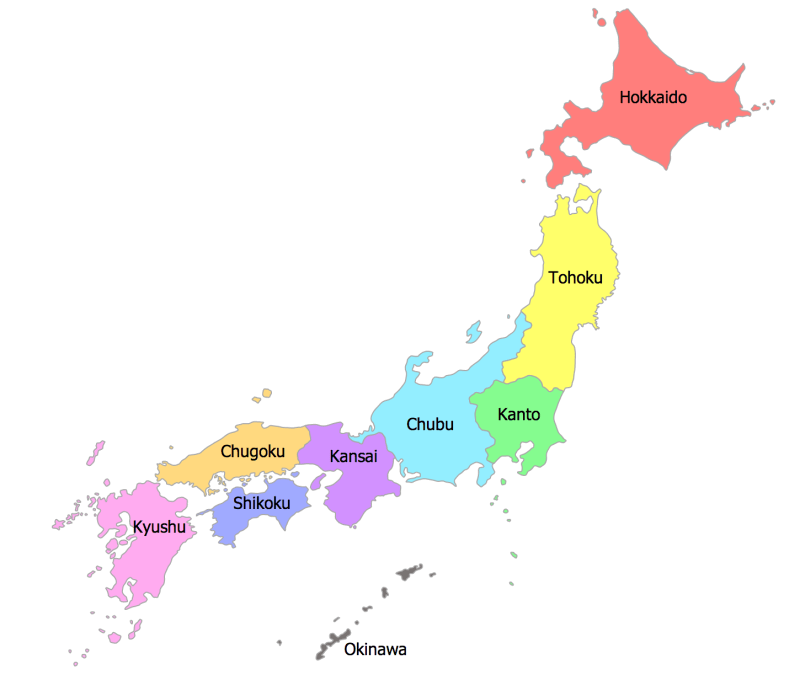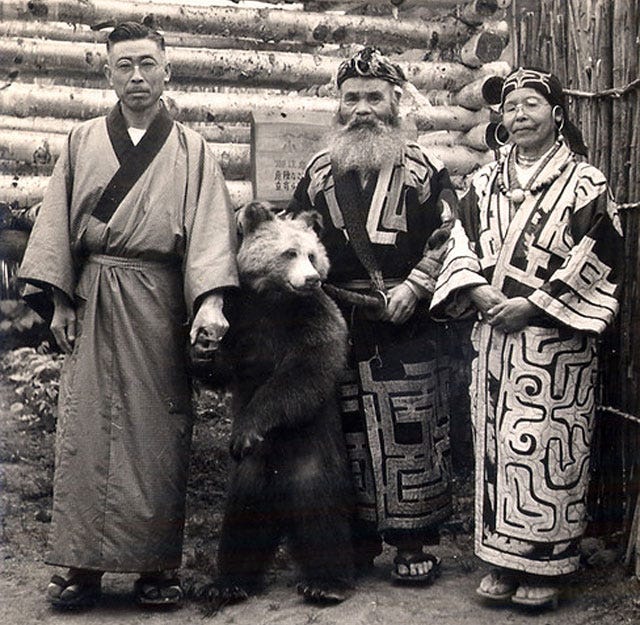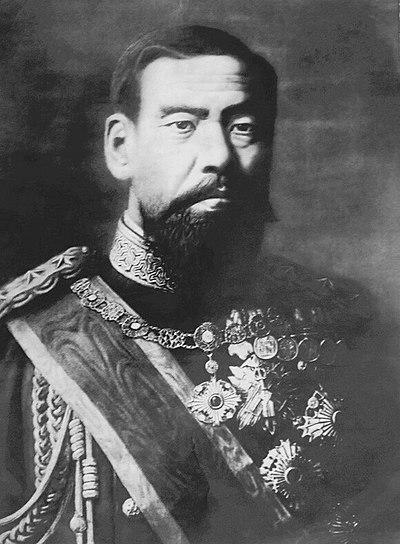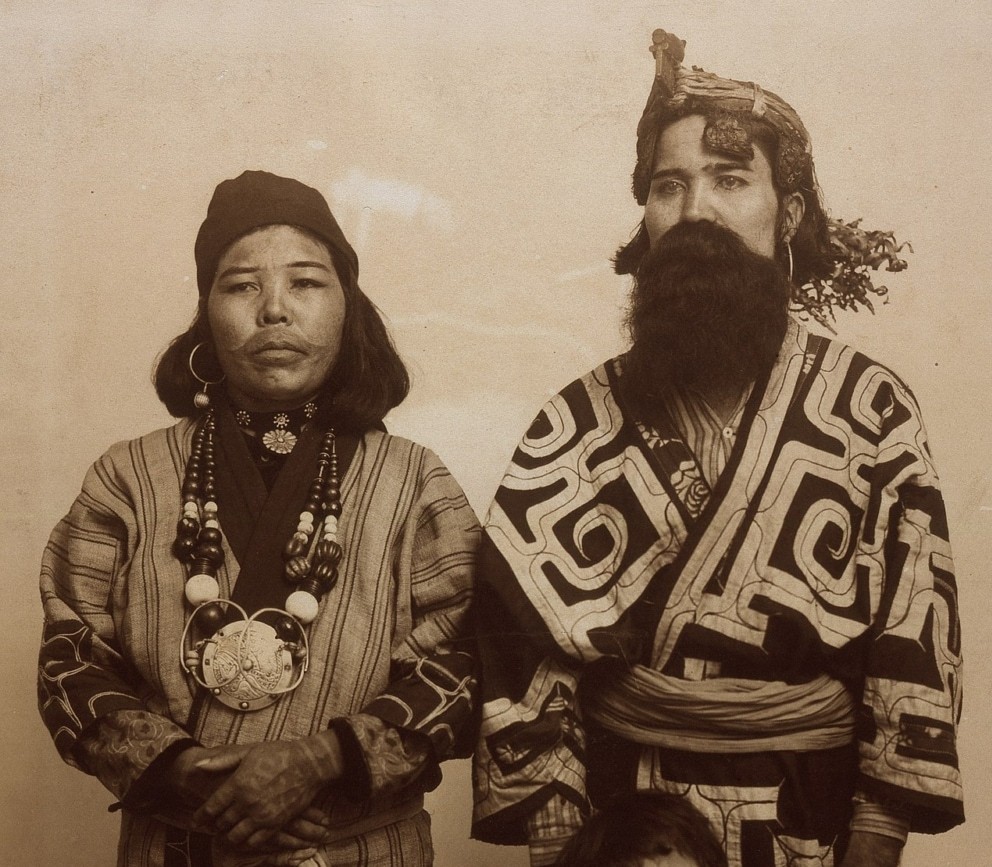The Ainu: The Forgotten People of Northern Japan
Introduction
The Ainu are an indigenous people hailing from the northern region of Japan and some islands in Russia. The Ainu were isolated from mainland Japan and hence developed their culture independently. Currently the Ainu language (Ainu-go) is critically endangered, leading to my aims with the research I conducted.
For this project, I have three main goals. These aims are: to find out the causes of the endangerment of Ainu-go, to look into the Japanese perception of the Ainu people over its history, and to evaluate the future of the Ainu language. One important fact to note is that the Ainu, due to their rich oral tradition, did not leave many written resources behind hence I could only rely on secondary sources to carry out my research.
History
It is widely agreed that the Ainu people are descendants of the population of the Jomon era. Throughout their history the Ainu predominantly lived in what is now called Hokkaido and also some parts of the Tohoku region.

During the Muromachi period (1336 – 1573) the Japanese took over some of the northern regions in Tohoku, forcing the Ainu in the north to be assimilated into Japan, or get evicted otherwise. During the Edo period (1603 – 1868) the Ainu and the Japanese (Wajin) traded resources and were generally on good terms. In 1868, The Meiji Restoration, a political revolution, started leading to the restoration of the Emperor’s power. However, in 1869 after the formation of the Japanese empire, the lands of the Ainu were formally incorporated into Japan as Hokkaido. This would then lead to the cultural and physical assimilation of the Ainu into Japan.

Forced Assimilation
As previously mentioned, it could be argued that the assimilation of the Ainu started during the Muromachi period when the Japanese took control of some Ainu lands in the Tohoku region. Following the Edo period, in 1869, the annexation of Hokkaido led to the Japanese empire taking full control over the lives and lands of the Ainu. 30 years after the annexation, The Hokkaido Former Aborigines Protection Act of 1899 set very harmful laws such as the prohibition of the use of Ainu-go, and the banning of religious observations and practices. The forced assimilation also took shape in the form of education. The Ainu were forced to learn Japanese in school, and due to the negative perception of the Ainu, including discrimination, even the Ainu people refrained from teaching their children the language.

Japanese Perception of the Ainu
During the Edo period and before the annexation of Hokkaido, the Ainu people were called Ezo or Emishi. We can see the Japanese perception of the Ainu by breaking down the word Ezo.

The “E” in Ezo means shrimp or lobster, and the “Zo” means barbarian. It is evident that the Japanese people saw the Ainu as primitive and barbaric. From such stereotypes and prejudices, social and economic discrimination seemed inevitable during the formal introduction of the Ainu into the Japanese empire. This ostracization of the Ainu community continued for over a century.
Thankfully, the modern perception of the Ainu language and culture has gotten better. The previously mentioned act introduced in 1899 was replaced by the Ainu Cultural Promotion Act of 1997. The new act would bring about changes in the social and political standing of the Ainu within Japan, such as the abolishment of the ban on the use of the Ainu language.
Although the Japanese perception of the Ainu has improved drastically, some expressions of discrimination still exist. One such example is the phrase “A, inu” which may sound like Ainu, but in Japanese, this means “Oh, a dog”. The overt dehumanization of the Ainu through such expressions is a symbol of the troubled past shared between the Japanese and the Ainu.
Preservation and Future
The Ainu language suffered from the harmful censorship of the Japanese government. However, more recent initiatives for the preservation of Ainu-go have proven effective in prolonging the longevity of the language.
- One mode of preservation employed was the analog recordings of native speakers of Ainu-go. These recordings were incentivized by giving out subsidies and offering technical assistance.
- Many private preservation efforts have been made in prolonging the lifespan of Ainu-go. This also includes Language Classes teaching Ainu-go in-person and online.
- Some cultural organizations have been formed in order to provide resources and plan events promoting Ainu culture.
As for the future of the Ainu language, it is still unclear. The preservation efforts are still continuing and improving the chances of the survival of Ainu-go. However, the number of fluent native speakers of Ainu-go is estimated to be around 20, thus making the preservation an extremely challenging endeavor. Whether the language is successfully preserved or not, learning about the culture and language of the indigenous Ainu people is a rewarding experience that enriches our understanding of the people who came before us.

References:
Tahara, Kaori. “The Saga of the Ainu Language.” UNESCO, 12 Feb. 2019, https://en.unesco.org/courier/numero-especial-octubre-2009/saga-ainu-language.
塚田 有那. “アイヌ文化の歴史と現在を知っていますか?.” Sustainable Japan by The Japan Times, 3 Oct. 2022, https://sustainable.japantimes.com/jp/magazine/48.
いぶりDAYひだか . “アイヌ語を当たり前に.” NHK北海道, NHK北海道, 14 May 2021, https://www.nhk.or.jp/hokkaido/articles/slug-nc1f7b3999686.
“Overview of Ainu Policy in Japan.” Council for Ainu Policy Promotion: Government of Japan, Ainu Policy Promotion Headquarters, https://www.kantei.go.jp/jp/singi/ainusuishin/index_e.html#:~:text=The%20act%20recognizes%20the%20Ainu,the%20previous%20welfare%20measures%20and.
“Efforts Underway to Save Ainu Language and Culture.” The Japan Times, 21 Feb. 2022, https://www.japantimes.co.jp/2022/02/21/special-supplements/efforts-underway-save-ainu-language-culture/.
“アイヌ語授業を公立小で 北海道・平取町、「日常会話に」願い.” 日本経済新聞, 日本経済新聞社, 20 Dec. 2016, https://www.nikkei.com/article/DGXLASDG09HDA_Q6A221C1CR0000/.
Images:
List of the Regions and Prefectures of Japan | Kyuhoshi. https://www.kyuhoshi.com/map-of-japan/.
File:Black and White Photo of Emperor Meiji of Japan.Jpg. 高木 背水 (Takagi Haisui), https://commons.wikimedia.org/wiki/File:Black_and_white_photo_of_emperor_Meiji_of_Japan.jpg.
Roundtable, History. “The Tragedy of the Ainu.” Medium, 7 Jan. 2019, historyroundtablepodcast.medium.com/the-tragedy-of-the-ainu-44f840e37f48.
List of the Regions and Prefectures of Japan | Kyuhoshi. https://www.kyuhoshi.com/map-of-japan/.